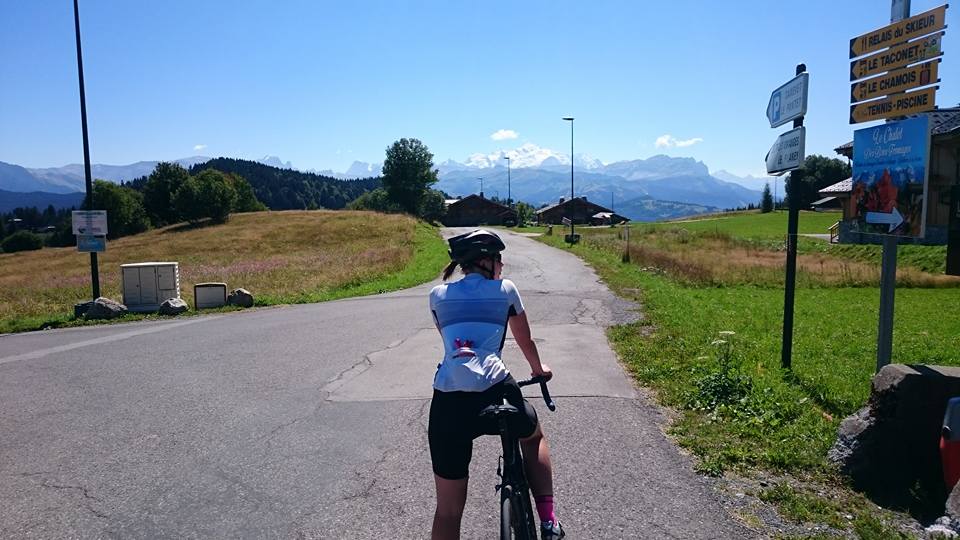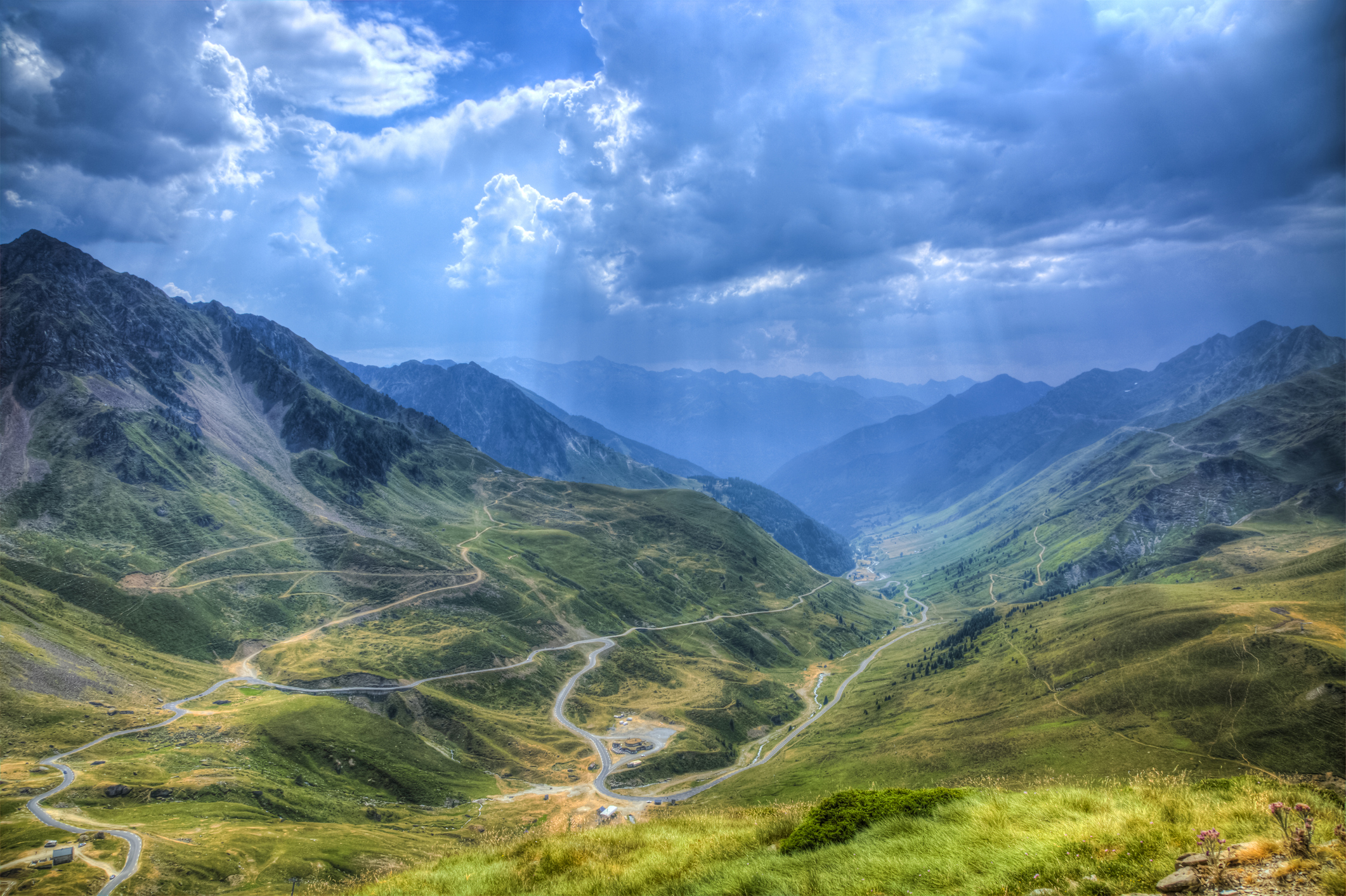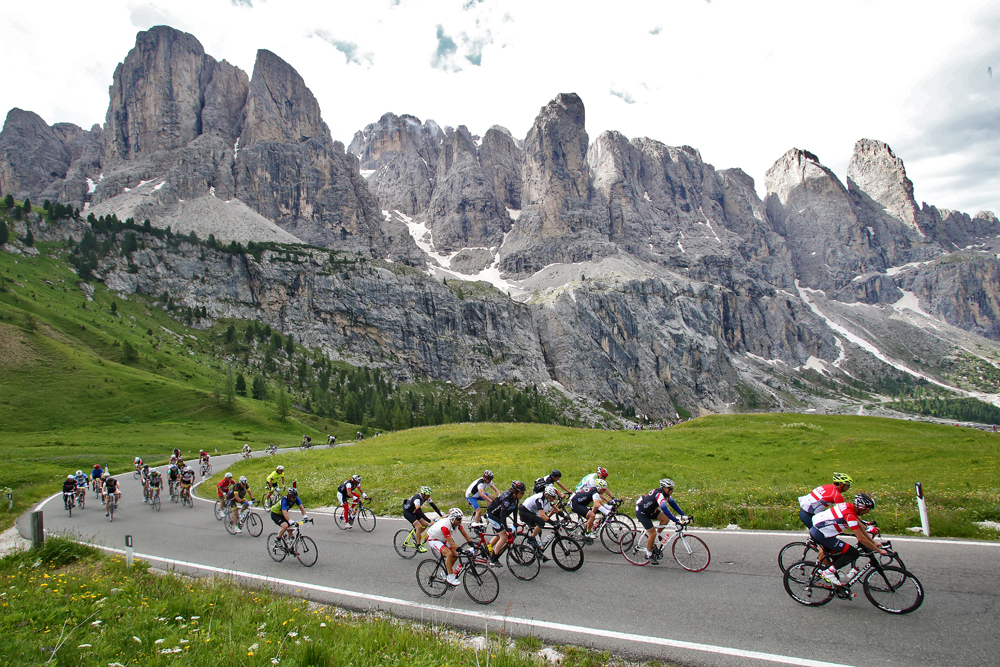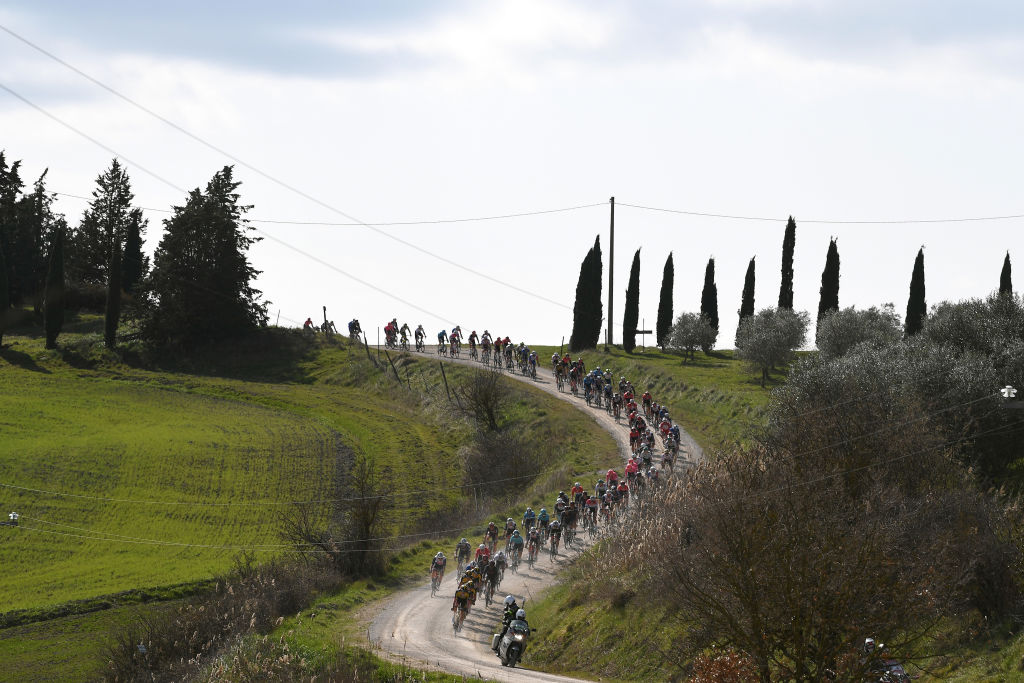Best cycling holidays: our guide on where to go for warm weather miles in Europe and beyond
Planning a trip away? Here are some of the options...


The spring cycling holiday - or training camp (just, make sure you're clear with all involved which one this is!) - is a well-maintained tradition in cycling. Getting some sunny miles in before the summer kicks off is a great way of building fitness and awakening some excitement for the months ahead as well as building relationships with club and teammates.
The European roads often boast a glass-like smoothness and as a result the miles seem to whizz by – even when there are some pretty substantial climbs along the way.
Speaking of climbs – the ones you’ll find adorning most popular cycling holiday locations are much longer than any you’ll find in the UK. These create the perfect opportunity for focused training, with threshold efforts up the climbs and the descents lend a perfect opportunity to (safely) put your skills to the test.
Cycling holidays in Spain

Stretch your legs in the sun
Spain is a favourite early season destination for the pros and you might find yourself rubbing shoulders with a team in your hotel or passed by them on the roads around the mainland cycling hotspots of Girona, Calpe and Denia (see below). There's also Mallorca or the Canary Islands if you fancy an island getaway.
Snow may prevent you from heading to the big mountains in the Pyrenees, the Sierra Nevada or the centre, but snow-free coastal climbs are usually easily accessible and can provide plenty of challenge both on road and on gravel and there's flatter riding as well for recovery days.
In the summer and autumn, much of Spain can be too hot for comfortable cycling, though the Basque country and northern coast remain temperate.
We've provided details of some of our favourite Spanish hotspots below.
The latest race content, interviews, features, reviews and expert buying guides, direct to your inbox!
Recommended time to visit: February, March, April
Read more: Best cycling holidays in Spain
Cycling holidays in Denia/Calpe

Calpe offers tough climbs as well as some flatter roads for time trial training
Both Calpe and Denia are located on the Mediterranean coast of mainland Spain, on the Costa Blanca stretch and about 35km apart from each other.
Like Mallorca, both areas are incredibly well set up for cyclists, with pretty much anything you could need available in case you run into trouble and need replacement parts or servicing.
There's also a wide range of terrains, with notable climbs as well as flat lands for those easy spins home. When off the bike, there's long stretches of sandy beaches to explore.
Read more: Cycling Weekly guide to cycling in Denia and Calpe
Good to know: Denia has proved popular with pro teams in the last few years. If you're in the area, make sure you check out Cafe Ciclista - where you'll find all the refreshments you could want, plus three weekly rides where you could pick up a little route planning inspiration. Sit in the cafe and you can admire the scrawl of assorted cyclists - from pros to local hitters - adorning the walls, as every visitor is encouraged to leave their mark.
Recommended time to visit: February to April, spring temperatures feature highs between 20-23ºC, winter temperatures are around 14-16ºC.
Cycling holidays in Girona, Spain

Girona's 'old town' is a remarkable city, but it doesn't take long to reach quiet, flat farm lanes - and climbs
This Catalonian city is home to a high number of professional cyclists - and it's easy to see why.
As well as boasting plenty of climbs including the 10km Rocacorba, 11km Els Angels and 10km Sant Hilari, Girona itself is famous for having a bustling social scene with plenty of cafes for refuelling and bars for evening entertainment.
Gravel riding is also on offer and flight time is about two hours.
Read more: Cycling Weekly guide to cycling in Girona
Good to know: The Service Course is a bike shop in Girona - but it's a lot more than that. Services on offer include guided rides on the roads known only to locals (many of them pros), full-on training camps, massage and airport transfers.
Recommended time to visit: November to May, highs of 14-23ºC November to May
Cycling holidays in Mallorca, Spain

Sa Calobra is Mallorca's most iconic climb
Popular with pros an amateurs alike, Mallorca is the largest of Spain's Balearic Islands. Riders often stay in Port de Pollença or Alcudia.
There are loads of tour companies, as well as hotels well set up for cyclists and plenty of bike hire facilities and shops.
Another reason for Mallorca's popularity is that the terrain is perfectly distributed - there are plenty of flat lands, rolling foothills and demanding climbs of 10-20km including Sa Calobra, Puig Major and Coll de Soller.
Read more: Cycling Weekly guide to cycling in Mallorca
Good to know: Once a year the Mallorca 312 takes over the island. You can choose to ride 312, 225 or 167km. The long route used to circle the entire island, but it now runs across the North and West, avoiding Palma, and allowing for closed road sections.
Recommended time to visit: February to April, spring temperatures feature highs between 16-20ºC, though there's a slight risk of surprise snow on the earlier end of this period.
Cycling holidays in Lanzarote, Canary Islands

Lanzarote is windy, and represents a challenge for time trialists and triathletes
This Spanish island is the most Easterly of the Canary Islands - meaning it's just 125km off the African coast, which means it's pretty warm and you'll not be risking any chance of snow as is the case elsewhere, e.g. in Mallorca.
The challenge Lanza presents is the wind - average wind speeds sit at about 11mp/h or 18km/h across the year - and can be much higher. Ideal for learning to utilise the bunch!
Volcanic landscape provides plenty of undulating roads, as well as some major climbs. The climb to do is the Monte Corona - which is about 10km at 4 per cent, and Femes, which features three different ascent options all around 5-6km and 6 per cent.
Good to know: Apologies if you're not into preceding a ride with a swim or following it with a run, but this island is home to Ironman Lanzarote - one of the most established triathlon races in Europe. The 182km bike course covers 2,551 metres of climbing, and can be followed at any time - with or without the swim and run.
Recommended time to visit: December to April, highs of 20-24ºC in Spring
Cycling holidays in Tenerife, Spain

The Canary Islands all offer iconic views
The largest of Spain's seven Canary Islands, Tenerife's temperate climate has earned it the name ‘Isla de la Eterna Primavera’ - the island of the eternal spring.
At the centre of the island is Mount Teide volcano and atop it is the Parador Hotel, a popular hold up for pro cyclists wanting to sleep at altitude.
The climb itself is the longest continuous ascent in Europe. In 35km you'll cover 2,100 metres of elevation. The altitude will get to you are the top, but there are plenty of opportunities to keep to the lower roads. The island's road circumference is just 223 miles, so it's hard to get lost.
Read more: Cycling Weekly guides to cycling in Tenerife and closely related, Gran Canaria
Good to know: The Parador hotel has been used by a number of pro cyclists. It's located on the plateau at the top of Mount Teide, meeting the ‘sleep high, train low’ criteria. Bradley Wiggins first stayed there in 2011, though since it's also been used by Lance Armstrong, not all riders are keen to share an association.
Recommended time to visit: November through to May, spring temperatures feature highs between 20-23ºC
Cycling holidays in Nice, French Alps

The Promenade des Anglais gives way to some spectacular riding
Nice might be on the seafront, but it's a stone's throw from some great riding. The Col d'Eze is often the finale of Paris-Nice in the spring. It's a day ride along the coast to Menton and the start of the Col de la Madone, beloved testing ground of Lance Armstrong where he proved that his pre-race preparations had given him the edge.
Further inland, things go up and down continually, with fantastic climbing like the Col de Turini and Montee de Peille. Being on the coast, Nice remains mild in the winter, but the hills in the hinterland can be savagely cold.
You can expect to be passed by plenty of pros too, with many basing themselves in Monaco.
Good to know: There's plenty of bike rental available in Nice, including at clothing brand Cafe du Cycliste's HQ in the Vieux Port. Cycle three different ways up the Col de Turini and they'll give you a badge for the Zinzins de Turini.
Recommended time to visit: Highs of 15-20ºC March to May
Cycling holidays in Morzine, French Alps

Well known for its mountain biking pedigree, Morzine also an excellent place to ride a road bike.
It's also just nudging the border to Switzerland - a beautiful but much more expensive place to stay and visit, yet aboard a bicycle passing into the country is of course free.
The resort towns of Morzine and Avoriaz are dotted with hotels and chalets, the vast majority of them set up for outdoor sports and as welcoming to bicycles as they are to snowy boots and skis.
The roads are varied, with plenty of flat and undulating stretches, as well as hairpin-laden climbs such as Avoriaz (14km, 6 per cent), Col de Joux Plane (11km, 9 per cent), Col de la Ramaz (16km, 6 per cent) and Col de la Joux Vert (15km, 6 per cent).
Good to know: There are loads of great rental chalets in the area, many of which you can just book yourself and DIY your trip. If you're after the guided ride experience, 44South is run by a group of UK riders who moved to the area a few years ago. They can put you up, show you the area, and cook your meals if you go full board.
Recommended time to visit: Highs of 16-18ºC May to September
Cycling holidays in the Pyrenees, France (and Spain)

The Col du Tourmalet is the icon of the Pyrenees
The Pyrenees mountain range stretches for over 430km between Spain and France. We've talked enough about Spain, and Cycling Weekly team members have enjoyed some incredible cycling holidays in France so we're sticking with this side for now.
Many of the famous climbs have been visited by the Tour de France on multiple occasions. Ascents include the Aubisque (30km at 4 per cent or 16km at 7 per cent), Tourmalet (18km at 8 per cent) and Hautacam (16km at 7 per cent).
As usual with mountainous areas, the Pyrenees are cooler than the lowlands, at least at the top, and so make a good summer cycling destination.
Read more: Cycling Weekly guide to cycling in the Pyrenees
Good to know: If you're after a mega challenge, check out the Haute Route's Pyrennes adventure. Over five days, you'll cover the very best of the area, with full support.
Recommended time to visit: Highs of 14-24ºC March to October
Cycling holidays in the Dolomites, Italy

The Dolomites host a number of closed-road events taking in their famous climbs
The Dolomites are one of the most famous mountain ranges in the world, with spectacular scenery and some terrific climbing. Its roads often see the climax of the Giro d'Italia, with roads like the Passo Giau, Passo Fedaia and Passo Pordoi the backdrop.
Cycling Weekly has tested out the ski resort of Alta Badia, close to all three, where you'll find plenty of bike-ready accommodation and hire shops to furnish your needs. The roads here are very rarely flat - they go up, or down.
As with all alpine destinations, the passes can be snowed in from October/November through to May, leaving a fairly limited window for the cyclist.

The alternative to the Dolomites is the region around Bormio, where you'll find yet more famous Giro passes including the Passo dello Stelvio, the 24km Gavia and the Mortirolo which features inclines as steep as 18 per cent over its 12km stretch.
Read more: Cycling Weekly guide to cycling in the Dolomites
Good to know: The area is keen to promote cycling, with the Sella Ronda Bike day and Dolomites Bike Day now annual events where roads are closed to cars and free for cyclists to enjoy. Both of these events are very inclusive and welcoming to all, you'll come across competitive racers as well as e-bikers taking in the view.
Those after a challenge might fancy the Maratona dles Dolomites, taking place in early July and covering 138km with 4230 metres of climbing (shorter courses are available).
Recommended time to visit: Highs of 15-23ºC March to May, 11-19ºC October-November
Cycling holidays in Tuscany, Italy

The pro peloton at Strade Bianche (it's likely you'll be able to take in a little more of the view yourself!)
Tuscany is an Italian cycling hotspot, with the pros taking on the Strade Bianche in the spring and Tuscany also the home to L'Eroica sportive, with thousands of riders on bikes built before 1988 and suitably retro clothing taking to the white roads.
Whilst roads elsewhere in Europe are celebrated for their sublime smoothness, Tuscany instead takes its fame for the white dirt roads which lace between the tarmac. However, the region covers over 22,000 km squared, and varies dramatically across its expanse.
You don't need to take on the gravel roads though, with many tarmac climbs in the region being long and challenging and little flat ground between them. Think the Derbyshire Peak District.
Summer temperatures climb to 30ºC, but visit between October and November for highs between 16-22 May ºC, or March to May for 16-23ºC.
Read more: Cycling Weekly guide to riding in Tuscany
Good to know: Cycling Weekly visited Tuscany during a fortnight long road trip, staying at a number of towns along the way. We found excellent value hire bikes just outside Siena at DFBikes, and explored some stunningly smooth and testing roads in the area. Heading off-road, we also picked up hire bikes at a riding stables within the Monti Sibillini National Park - though lack of competition meant the price tag on a few hours aboard a pretty outdated set of wheels was high - but the scenery made up for it.
Recommended time to visit: October and November highs of 16-22 May ºC, or March to May for 16-23ºC
Cycling holidays in Belgium

Test yourself against the cobbles
Belgium is home to some of the most high profile bike races in the world like the Tour of Flanders, not to mention its winter cyclocross scene. The early season Classics can be as much a test of riders' mettle as their fitness and a trip to Belgium in the spring can be as challenging for the weather as for the riding.
Belgian weather is much like that in the UK, so if you're looking for better conditions, it might be worth waiting for the summer or early autumn.
Terrain varies greatly, there are plenty of flat stretches in the north whilst you'll find the hills and cobbled climbs ridden by the pros in the south.
The famous cobbles will present their own challenge, and climbs to look out for include the Koppenberg (600 metres, 11.6 per cent average, 22 per cent max) and Oude Kwaremont (2.2km, average 4.2 per cent average, 11 per cent max), both of which make an appearance in the Tour of Flanders, as well as the Muur van Geraardsbergen.
Good to know: You can choose to ride the famous climbs any time of the year, and it'll be sunnier mid summer. However, if you want to ride alongside others, then combine your trip with some cycling tourism and watch some pro racing, you could enter the Tour of Flanders sportive or the Liège-Bastogne-Liège Challenge, both of which take place on the same weekend as the professional peloton hits the cobbles.
Recommended time to visit: Highs between 13-22ºC from April to September
Cycling holidays in Portugal

Though Portugal is not the most well documented cycling location, riding in Portugal is becoming more popular with a number of tour companies setting up in recent years.
Portugal's roads differ from those you'll find in Spain and its islands. There are climbs, but there's also a wealth of long and rolling terrain well suited to the puncheurs of the world.
Madeira offers something different from mainland Portugal, although many of its roads are brutally steep, so you may need some uplift to make the experience enjoyable. It's a good place for gravel riding though, with its levada network offering the chance to reach some remote areas.
Good to know: Cycling Weekly visited Portugal with Volta Pro Tours - the company runs a range of cycling holidays, but we particularly enjoyed the N2, which covers the 750km on one road (the N2) from Chaves to Faro.
Recommended time to visit: Highs of 16-24ºC November - April
Cycling holidays in Cape Town, South Africa

Riders on Chapmans Peak during Cape Town Cycle Tour
The longest flight on our list by a long way, but the stunning roads that lace this coastal area - which sits just below the shadow of Table Mountain in South Africa - are well documented.
Sights to explore include the Smitswinkel climb, Cape Point Nature Reserve, the Misty Cliffs and Chapman’s Peak/Suikerbossie double ascent.
Good to know: There are two major events which you could wrap your visit around. The Cape Town Cycle Tour sportive is a one day ride which takes in the greatest sights of the local area. Alternatively, go all out and check out Hot Chillee's Cape Rouleur, running between March 6-10 this year. This tour explores the Cape Winelands, and splits riders up into three seeded groups, with the opportunity for competition with time segments.
Recommended time to visit: March to November, highs of 18-25ºC
Check out these great cycling holidays
We've teamed up with Pedal Tripr to curate some stunning cycling holidays especially for you.
Cycling holiday FAQs
When to go on a cycling holiday?
The most popular time to jet away for miles of smiles is between February and April.
Of course the best time will depend upon your chosen location, but these months represent the most suitable time to log the miles if you're training for summer events in the UK.
If you're looking for a challenge in the Alps, Pyrenees or other mountains though, summer or early autumn are likely to provide better conditions - you may even find that the more famous high passes are still closed until end-May. Autumn weather is often sunny and settled, while summer can see dramatic localised thunderstorms in the mountains.
Being in the southern hemisphere, South Africa's season is the inverse of Europe so it offers spring conditions deep into the northern autumn.
Should I go on a DIY or guided cycling holiday?
There are two clear choices when it comes to organising a cycling holiday.
You can go DIY – booking your own flights, transfers, accommodation and bike hire (if applicable) and planning your own rides.
This is substantially cheaper but requires either decent knowledge of the area or an appreciation for ride planning, map reading and spending evenings on Google.
The DIY option gets even cheaper if you’re going with a large group, as you can divide the cost of a chalet or book a mini-van to slice the transfer fee.
Alternatively you can go through a cycle tour provider. These vary in terms of provision, but many will include accommodation, services of a mechanic, food, a guide who will lead rides and even a follow car that will store provisions (and offer a lift if you’ve reached the point where no energy bar will help). There may be several groups going out, with rides at different speeds, too.
This option is considerably more expensive, but is often advertised as an opportunity to ‘feel like a pro for a week’. Deluxe cycle tour providers like Ingamba will provide top spec bikes, superb food and accommodation and ex-pro guides, complete with tales of their exploits in tours past.
Should I hire a bike or take my own for a cycling holiday?
This is a question that deserves its own dedicated article - and you'll find the hire bike vs own bike discussion here.
In short, popular budget airlines will charge about $70 / £60 to carry your bike away for you, and you'll need a bike bag or box which could cost anywhere between $120 / £100 and $750 / £700.
Cycling Weekly has experimented with a cardboard box as opposed to a bike box. The theory is baggage handlers are more careful with the fragile looking exterior - but we're not sure it's worth spending the flight imagining the carbon frame massacre that could be going on in the underbelly of the plane.
Hire bike cost varies dramatically - but in Mallorca you can get a carbon model with Shimano Ultegra for about €20 / £17 a day.
Taking your own bike means it's ready set up with the saddle height, offset and reach exactly as it should be, but it also means you might have to dissemble and reassemble it at each end. Plus, however good your bike box, there's also a slight chance of your pride and joy getting damaged en route.
Hiring a bike means you'll need to measure it up to get the fit right, and the new ride might take a bit of getting used to.
On the other hand, you can find top spec bikes at many hire locations, so if you've always wanted to ride a Pinarello Dogma F with top drawer components, or just want to see what a different bike feels like to ride, hiring might give you the chance you've been waiting for.
The other option is to drive to your destination, particularly if it's somewhere close to home. You'll probably want a bike rack for your car to make taking your bike with you easier and more comfortable.
Michelle Arthurs-Brennan the Editor of Cycling Weekly website. An NCTJ qualified traditional journalist by trade, Michelle began her career working for local newspapers. She's worked within the cycling industry since 2012, and joined the Cycling Weekly team in 2017, having previously been Editor at Total Women's Cycling. Prior to welcoming her first daughter in 2022, Michelle raced on the road, track, and in time trials, and still rides as much as she can - albeit a fair proportion indoors, for now.
Michelle is on maternity leave from April 2025 until spring 2026.
